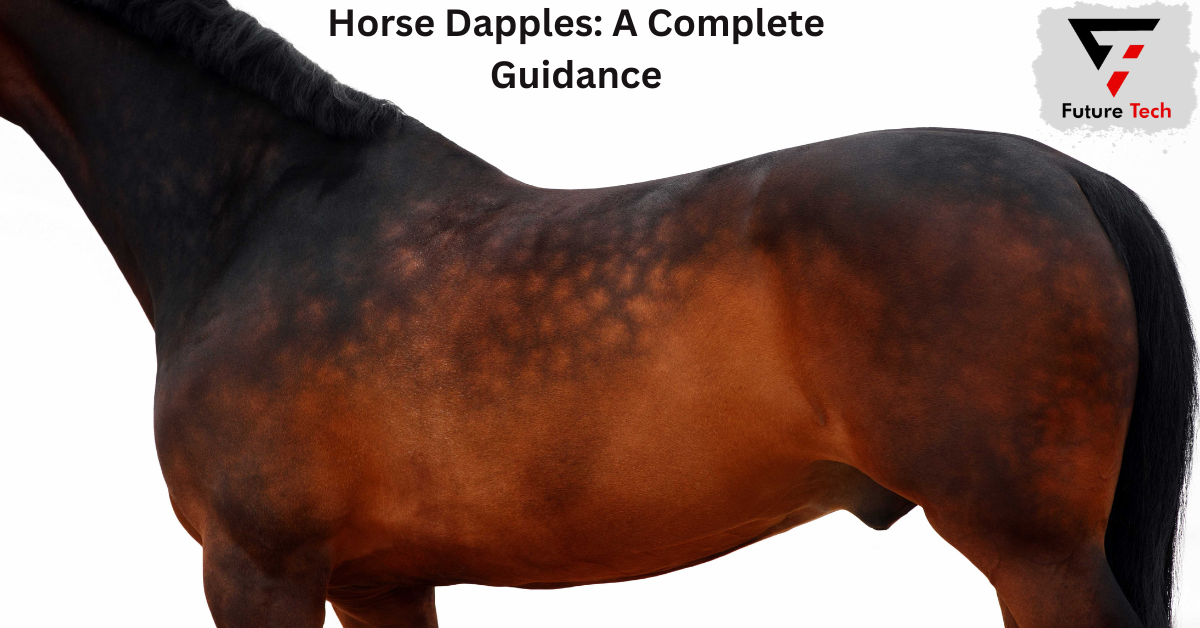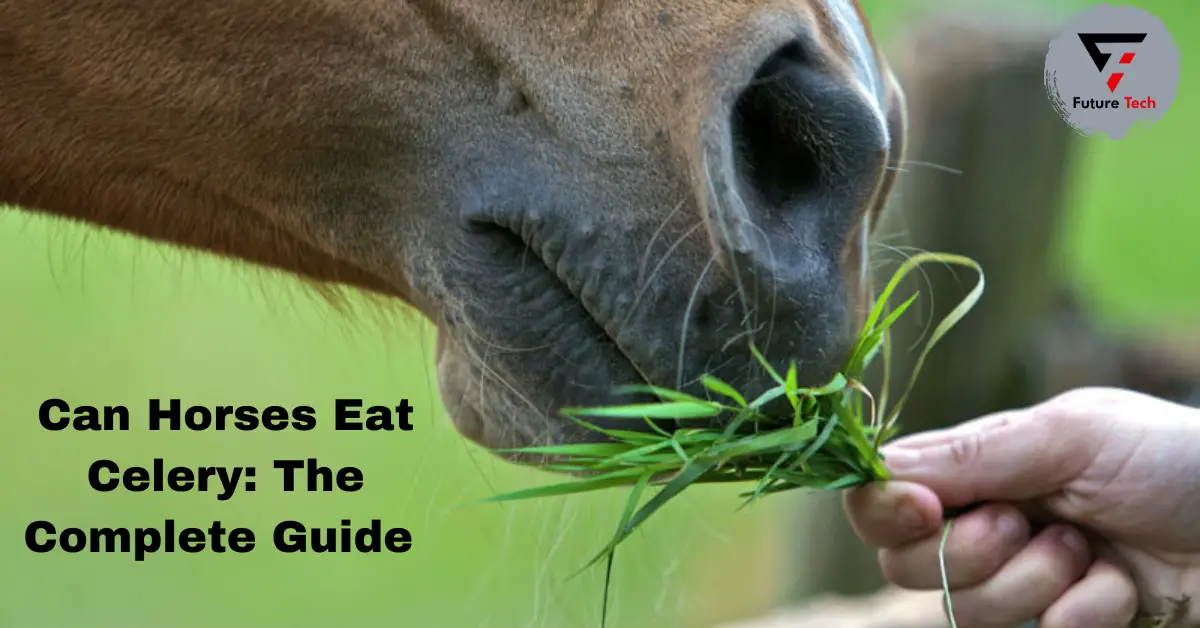For horses and animals, a glossy coat signifies excellent health and well-being. Intensity and frequency of grooming, in addition to nutritional status, are two apparent factors that contribute to an exemplary hair coat. Furthermore, nutritional supplements that promote healthy, glossy coats are notably well-liked dietary products, both in the United States and presumably internationally. Horse Dapples are explained below.
“This is hardly remarkable given the general perception that a sturdy, glossy coat signifies vitality and good health.” “Diet can influence subtler features of a horse’s coat, such as apples, in addition to sustaining bloom,” explains Kentucky Equine Research nutritionist Kathleen Crandell, Ph.D.
Horse Dapples are spherical regions of hair that differ in color or depth from the surrounding or base coat. Dappling is comparatively more prevalent on gray horses than on bays and chestnuts, among others. Nongenetic factors, such as consistent maintenance and balanced nutrition, can enhance a horse’s coat color and dappling, both governed by genetics.
What Causes Dapples on Horses?
Dapples may be the consequence of variations in the crimson and black pigmentation of the individual coat hairs of a horse. In addition to the more common shade of grey with dapples, bay, and palomino are viable coat tones.
Although a horse may have a genetic predisposition to develop dapples, this does not always ensure he will. A combination of your horse’s inherent propensity to dapples, a well-balanced diet, and optimal health will determine whether or not you can bring them out.
A significant factor in determining whether or not a horse will develop dapples is its genetic makeup. Dappled coats are more prevalent in specific varieties, including Hanoverians, Dutch Warmbloods, Andalusians, and Thoroughbreds. However, they are not present in every horse of these breeds or with the same lineage. For instance, in a set of siblings bearing the same dam and progenitor, one male offspring might possess a dappled coat while the other does not. Many people desire to have their horses adorned with dapples, but proper genetic makeup is necessary to achieve this.
Additionally, coat color influences the formation of dapples. It is more probable that buckskin, grey, bay, or palomino horses possess them. Although horses with dapples could have the gene for any coat color, their occurrence in chestnuts is uncommon. Like the blossoming of spring flowers, the coats of many horses will dapple seasonally. Your horse’s dapples may become visible as he sheds his winter coat in the spring. They might persist for a few weeks to a few months before disappearing. Other horses may be susceptible to dappling throughout the year, including summer and autumn; how your horse’s coat dapples is as distinctive as he is.
Types
The following are the different types of Dapples:
Gray Dapples
Gray is a progressive coat color in horses, meaning these animals typically have a different coat color at birth. White hairs will commence to emerge shortly after birth, initially clustering around the eyes and subsequently proliferating. Dogs frequently develop dapples as the transition from the original color to gray hairs occurs as their coat lightens. Dapples typically become more conspicuous as gray horses advance through the various phases of the graying process.
The exact mechanism through which dapples develop on gray horses is unknown; nevertheless, variations in the arrangement of pigment-producing cells (melanocytes) in the epidermis and hair follicles seem to play a role in this phenomenon.
Silver Dapples
A particular variation in the coat color, known as silver dapple, affects the pigment distribution in the hair coat of horses.
The silver dapple gene, which modifies the expression of black (eumelanin) pigment in the hair but has no effect on red (phaeomelanin) pigment, is responsible for this distinguishing pigmentation.
Equine individuals harboring the silver dapple gene exhibit a mane and tail that are silvery or grayish. At the same time, their coats are typically chocolate or reddish-brown in hue.
A gene for attenuation known as a silver dapple lightens ebony hairs.
Due to the autosomal dominant inheritance pattern of the silver dapple gene, a single copy of the gene from either parent is sufficient for a horse to manifest the silver dapple coat color. Homozygous horses, which possess two copies of the gene, might exhibit a more conspicuous silvering effect.
This pattern is present in the subsequent breeds:
The Icelandic equine
Miniature American horses
Rocky Mountain equine species
The Ardennes
The Morgans
Painted American horses
Horse quarters
Such are American Saddlebreds
The Shetland pony
Northland Norwegian ponies
Ponies and Welsh
The Arabians
The Nordic Swedish Warmbloods
Nutrition for Dapples
The diet of your horse has a substantial effect on the condition of their epidermis and hair. Although genetics significantly influence the manifestation of dapples, nutrition also exerts a critical impact on the formation of these alluring patterns.
Ensure that your horse’s nutritional needs are satisfied to increase the probability that dapples will develop in their coat. Protein, vitamins, trace minerals, and lipid consumption impact the development and appearance of the skin.
Consult an accredited equine nutritionist for assistance in developing a well-balanced diet for your horse. After assisting you in selecting the proper forage to satisfy your horse’s nutritional requirements, your nutritionist may suggest supplementation with additional feeds or feeds to achieve a balanced diet.
Healthy horses with dapple potential often display discernible patterns after addressing nutritional deficiencies and ensuring a balanced diet.
Trace Minerals
Trace minerals, which are essential constituents for a multitude of physiological processes, aren’t insignificant in quantity requirements for horses.
It is common for horses fed only forage to exhibit deficiencies in trace minerals. As a result of sun bleaching, this may lead to hair coat fading and hoof problems, as well as compromised immune function.
The following are the six most essential trace minerals in the nutrition of an equine:
Curium copper (Cu)
Zn (zinc)
Cobalt (Co)
The element iodine (I)
Mn (manganese)
Sixthium (Se)
Although numerous ration balancers and supplements contain trace minerals, not all supply adequate amounts to maintain a balanced diet for your horse. Many products possess inorganic mineral sources. However, studies show horses may absorb trace minerals more easily when binding or organic.
Copper and Zinc
The diet should include the trace metals zinc and copper in the right amounts to maintain healthy skin, hair, and hooves. The ratio of zinc to copper in the optimal diet is between
Insufficient intake of these elements in the diet might cause sluggish or even nonexistent hair development in horses. Moreover, deficiency may lead to a dull, rough, or brittle coat, potentially more vulnerable to harm.
Zinc is necessary for healthy enzyme activity and plays a role in producing keratin, the protein that gives hair its structure. Sufficient zinc makes the coat seem lively and healthy by adding gloss and luster to the hair.
To enhance the structure of hair and lower its vulnerability to breakage and damage, copper helps the proteins that make up hair produce cross-linkages.
Melanin, the pigment responsible for hair color, requires copper as one of its key components. A copper deficit in horses may cause depigmentation of the skin around the eyes and muzzle, as well as fading or dull coat colors.
Studies indicate that providing horses with diets richer in copper and zinc may significantly enhance the look of their hair coats. One study fed yearling thoroughbred horse feed supplemented with five percent more organic copper and zinc. Compared to a control group, the research found improvements in the composition and structure of hair.
Overloading Iron
Iron is another trace mineral that may affect the dapples on your horse’s coat, although its effects are more negative than positive. Although iron is necessary for enzyme activity and oxygen transfer, excessive iron intake has detrimental consequences.
The overabsorption of iron may cause problems with the absorption of zinc and copper from the diet, particularly if the iron comes from forages planted in soil high in iron. Similar locations allow for the absorption of all three minerals in the small intestine, and an excess of iron may compete with copper and zinc for absorption.
Lethargy, changes in coat color or texture, foot issues, weight loss, and stiff joints are some symptoms of iron excess in horses.
See a veterinary or equine nutritionist for assistance in creating a balanced diet if you believe your horse is overeating iron. Supplementation of organic zinc and copper helps mitigate some of the negative consequences of iron excess.
It is advisable to administer iron supplements to horses exclusively under the supervision of a veterinarian. Only when you have persistent blood loss is an iron deficit in horses considered a possible risk.
Summary
Dapples on horses are spherical regions of hair that differ in color or depth from the surrounding coat. They are more prevalent on gray horses than on bays and chestnuts. Dapples on a horse’s coat indicate variations in the red and black pigmentation of individual hairs. It may occur to enhance a horse’s coat color and dappling via genetics, consistent care, and a nutritious diet.
Horse Dapples are more prevalent in specific breeds like Hanoverians, Dutch Warmbloods, Andalusians, and Thoroughbreds. Gray horses usually have a distinct color coat from birth, and the silver dapple gene affects just the production of black pigment in the hair, leaving red pigment unaffected.
Nutrition plays a crucial role in developing dapples in horses’ coats. A well-balanced diet, including protein, vitamins, trace minerals, and lipids, can increase the likelihood of dapples. Trace minerals, such as Curium copper, Zinc, Cobalt, Iodine, Mn, and Se, are essential for healthy skin, hair, and hooves. Insufficient intake of these elements can lead to sluggish hair development, dull coats, and compromised immune function. Overloading iron can also affect the absorption of these minerals, leading to lethargy, changes in coat color, foot issues, weight loss, and stiff joints.




